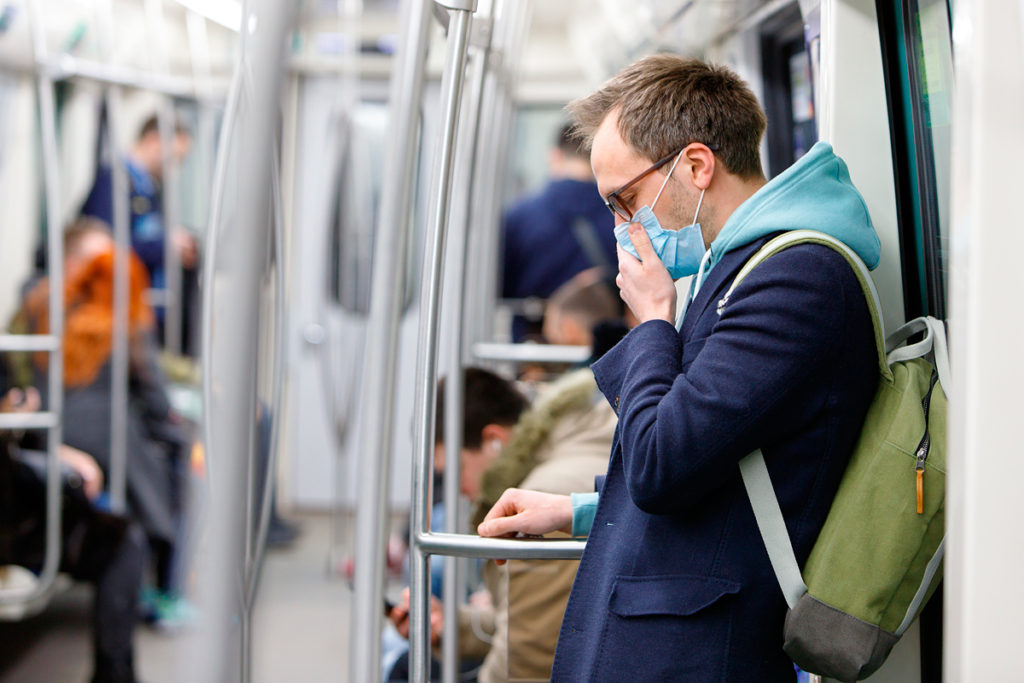The immune system protects us from alien genetic forms and dangerous toxins. The best immunological homeostasis allows you to quickly remove the pathogen from the body without damaging the tissue.
Doctors have long recorded a stronger antiviral immunity in women than in men. The female body responds more strongly to the invasion of viruses, actively produces antibodies, and quickly restores damage after diseases.
Genetic differences between men and women were recorded for influenza viruses, coronaviruses, respiratory syncytial virus, hepatitis C, Zika virus, and HIV-1. However, specific therapy based on gender differences is still widely used only in oncology.
In the COVID-19 pandemic, these differences were most pronounced. For example, in Europe, the hospitalization rate for women is 34% lower, and the death rate is 42% lower than for men.
Genetic differences between men and women
Each person has two chromosomes. They were formed at conception from the parents’ chromosomes. All information about the structure and functioning of the body is encoded in the chromosomes. Cells of the immune system are the product of activation of individual fragments of chromosomes-genes.
The male pair of chromosomes are X and Y. the Female pair is X and X. This means that information encoded in the X-chromosome is two times more common in women than in men.
Pathogenesis of coronavirus
A new coronavirus disease started in China in December 2019. Mortality from the new coronavirus is less than from the previous SARS and MERS.
However, SARS-CoV-2 is more contagious. It is more easily transmitting from person to person. The virus infected tens of millions of people, and hundreds of thousands died. On every continent, in every country, there are its victims. The virus has caused record damage to the world economy.
The reason why the virus is so contagious is because of its ability to enter healthy cells. It uses the cell membrane receptor angiotensin-converting enzyme 2 (ACE2). Through this receptor, cells receive the building material-amino acids. Most actively, the receptor is used by cells of the epithelium of the nose, lungs, blood vessels, and intestines. SARS-Cov-2 has a higher ability to bind to ACE2 than SARS.
Infection most often occurs through inhalation of infected air.
First, the virus affects the upper respiratory tract: the nose, larynx, and pharynx. If the body can suppress the virus at this stage, the disease is mild.
Otherwise, the virus enters the lower respiratory tract: lungs, trachea, bronchi. The disease becomes severe. When the lungs are damaged, the body begins to run out of air. Acute respiratory distress syndrome (ARDS) develops.
If the immune system cannot stop the virus at this step, it gets into the bloodstream. Blood vessels are damaged, and vital organs are disrupted – all this may lead to death.
Infection
The virus enters cells through the ACE2 receptor. However, it has been observed that children almost do not suffer from COVID-19. ACE2 is less active in them than in adults. Therefore, some researchers believe that a low level of ACE2 reduces the risk of a severe form of the disease.
The X-chromosome encodes the ACE2 receptor. A 2017 study found a lower level of ACE2 activation in lung tissues in women compared to men. A 2010 study demonstrates that the female hormone estrogen suppresses ACE2 activation. Moreover, during the COVID-19 pandemic, it was shown that in men with heart failure, the concentration of ACE2 in blood plasma and sputum is higher than in women. Also, the virus is detected longer in nasal smears in men than in women.
On the other hand, ACE2 plays an anti-inflammatory role. It acts as a catalyst to facilitate ARDS. The signal protein of antiviral protection-interferon activates the receptor. Interferon type I is the basis of antiviral immunity. It is produced in response to an invading virus and triggers the immune system to fight this alien genetic form.
Thus, the treatment of men and women at different stages of the disease should be different. In women, low ACE2 at the initial stage reduces the spread of the virus beyond the respiratory system. Moreover, in the late stage, high interferon-stimulated activation of ACE2 protects against acute respiratory distress syndrome.
As a result, the use of estrogens for the treatment of men with severe COVID-19 is now testing.
Italian doctors are also studying another mechanism of virus penetration into a healthy cell. The virus uses the TMPRSS2 protease to overcome the cell membrane more effectively. The significance of protease for the body remains a mystery. Nevertheless, it is known that male hormones androgens increase the activation of TMPRSS2. Usually, doctors seek to reduce the production of androgens in the treatment of prostate cancer. However, the Italians consider this approach relevant for COVID-19 as well.
The immune system reacts to the virus
The body’s cells have special receptors that recognize foreign genetic forms. These receptors are called toll-like receptors (TLR). Once they find the virus, they prompt the immune system cells to produce type I interferon. Interferon activates several hundred genes for the production of components of virus protection.
Type I interferon is crucial for suppressing virus reproduction. Interferon also regulates the strength of the immune system’s response.
It is known that the X-chromosome encodes toll-like receptors. A 2018 study found that the second X-chromosome increases TLR activation in women’s immune system cells. Previously, in 2006, it was shown that women’s cells produce more type I interferon when the virus is detected. Thus, the female body engages more cells in the fight against the virus than the male body.
SARS-Cov-2 can suppress interferon production and evade the immune system’s response. Doctors report low levels of interferon in men with severe COVID-19. It highlights the critical role of toll-like receptors and type I interferon in the development of the disease.
Experimental treatment with interferon alpha-a subspecies of type I interferon-revealed a pattern. Early administration of interferon facilitates the course of the disease and reduces mortality. Furthermore, later administration – delays recovery and increases mortality. The study was conducted mainly on men. Therefore, the results may be partially biased.
Antibodies production
In response to the penetration of the virus, the body produces antibodies. They protect against repeated illness because they tell the cells of the immune system how to fight the virus. To treat the severe form of COVID-19, doctors use the blood plasma of recovering patients. The plasma contains antibodies. Its use has reduced mortality in intensive care units. Also, antibodies are given by vaccination.
Studies on mice, monkeys, and humans have shown that the female body produces antibodies faster and in more significant quantities.
In mice, estrogen, the female sex hormone, contributes to the production of antibodies. Testosterone, the male sex hormone, on the contrary, suppresses the production of antibodies.
The same pattern was observed in people who were vaccinated against the flu. Men with high testosterone levels had the lowest levels of antibodies.
Genetic features of the female immune system
Interferons are the main signaling molecules of antiviral protection. Furthermore, T-lymphocytes are the primary cells that implement antiviral protection.
There are different types of t-lymphocytes. Some are involved in the production of antibodies, and others directly fight the virus by killing infected cells. Still, others promote tissue regeneration. The fourth helps to reduce excessive immune activity.
A 2004 study reported that the female hormone estrogen has a positive effect on T-cell activity. Moreover, in 2017 it was found that the X-chromosome contains a gene that helps T-lymphocytes participate in the production of antibodies. There is also a gene on the X-chromosome that helps T-lymphocytes regulate immune activity.
There are particular type 2 innate lymphocytes (ILC2) called type 2 immunity or acquired immunity. It is formed under the influence of infectious diseases or as a result of vaccination.
Acquired immunity is more pronounced in women. Studies in mice have shown that male hormones androgens reduce the amount of ILC2.
ILC2 is involved in the protection and renewal of respiratory epithelial cells. Epithelial cells can secrete antimicrobial fluid. These cells also remove foreign organisms and infected cells from the respiratory tract by moving sputum into the mouth for expectoration. Type 2 innate lymphocytes enhance these processes by producing unique proteins (interleukins-4, 5, 13).
A laboratory study in 2020 revealed another feature of interleukin-13. It reduces the activity of the ACE2 cell membrane receptor, through which the coronavirus enters the cell.
A 2017 study found that the X-chromosome encodes the interleukin-13 receptor. Therefore, a woman’s body can dose it more accurately.
Tissue recovery after illness
The epithelium consists of different types of cells. However, they all originate from epithelial stem cells. T-lymphocytes promote stem cell reproduction by producing interleukin-22. Interleukin-22 is involved in the transmission of signals that trigger the reproduction of stem cells. Interleukin-22 also reduces inflammation in viral infections and protects against bacterial superinfections.
A 2018 study shows that female sex hormones increase the ability of T-lymphocytes to produce interleukin-22.
Another factor that accelerates the growth and division of epithelial cells is amphiregulin. It is a protein responsible for maintaining the integrity of the mucous membranes. Type 2 congenital lymphocytes produce amphiregulin. However, male sex hormones reduce the production of this type of lymphocyte.
Conclusions
Women’s immune systems are more focused on protecting against infectious diseases. Tissues are more resistant to virus damage.
Many immune mechanisms are aimed at preventing severe forms of the disease. Acquired immunity in women is more effective than in men.
Tissue regeneration from mechanical damage is better in men. Furthermore, the female body recovers faster after diseases. Female hormones significantly contribute to the regeneration of the lungs.



